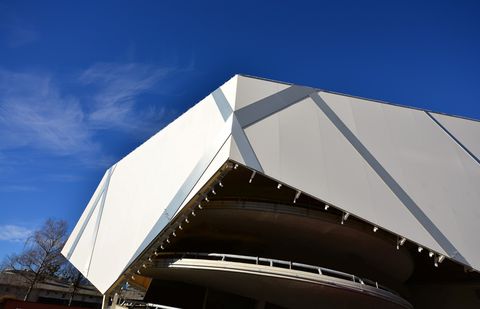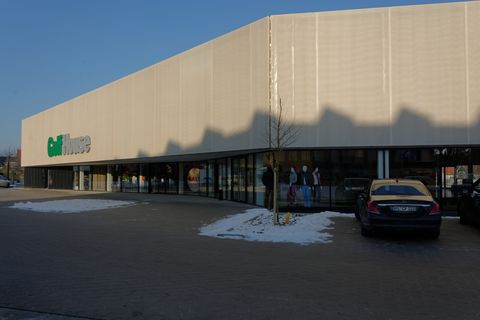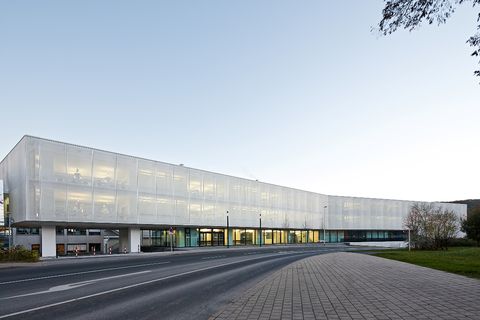ADVANTAGES OF TEXTILE FAÇADES
Woven fabric façades are often installed in front of a conventional façade to improve the overall physics of the building. Open-mesh fabrics that appear semi-transparent are the most commonly used materials. The shading effect of the mesh fabric directly contributes to a reduction of the air conditioning costs. Air circulating in the gap between the conventional façade and the fabric façade improves the insulation and significantly helps to reduce the energy costs. The shape of the textile façade can be designed to create an architectural feature to compliment the rectangular geometry of the building.
Semi-transparent mesh fabrics are often used due to their light transparency. They are made from woven glass fibres that are coated with PTFE or silicone. PVC/PES fabrics are available in several colours and they can also be printed.
| PTFE-glass fibre open mesh type 18656 (white) | PTFE-glass fibre open mesh type 18971 (silver) | PTFE-glass fibre open mesh type 18972 (black) | PVC/PES open mesh type TF 400 (white) | |
| Tensile strength | 5000/4500 | 1500/2500 | 2400/1800 | 3300/2200 |
| Width | 300 | 300 | 300 | 320 |
| Open area | 40 % | 57 % | ≥ 30 % | |
| Translucency | 34 % | 40 % | 40 % | 42 % |
TEXTILE FAÇADES IN USE
The textile façade panels are pre-fabricated and are fixed either onto an aluminium profile or directly onto the supporting structure. Temme // Obermeier’s portfolio of aluminium profiles systems can be adapted to almost every design type. The supporting structure is fitted with walkways for maintenance activities. If maintenance walkways are not required, then it is possible to reduce the gap between the textile façade and the main building.
The roles of fabric textiles for façades are available between 1.78 and 4.70 m. If the client does not want to see welding joints, then the textile area will determine the size of each panel and the associated frame.



